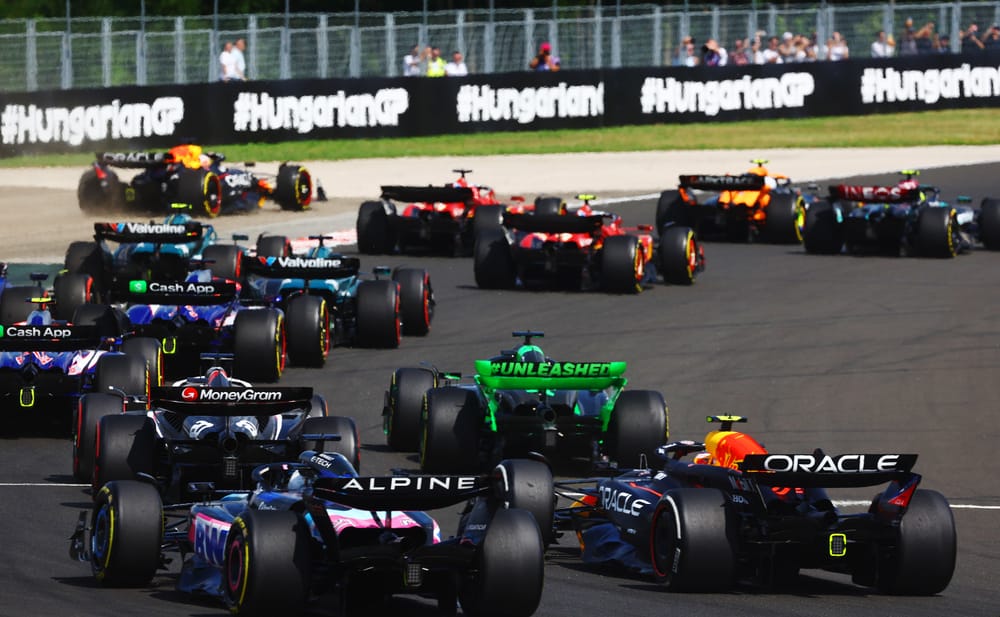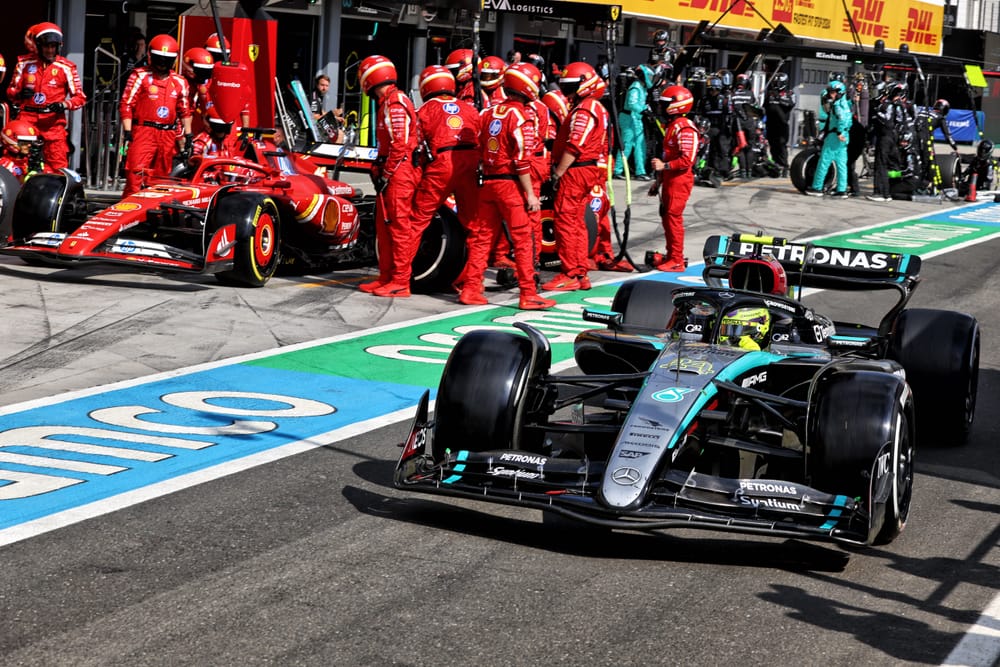Up Next

There has been a lot of talk lately about a small addition to the brake system section of Formula 1’s technical regulations, included in the latest edition published at the end of July.
This is about a single new sentence added to Article 11.1.2 of the technical regulations. Originally, that rule stated that “the brake system must be designed so that within each circuit, the forces applied to the brake pads are the same magnitude and act as opposing pairs on a given brake disc”.
This regulation and the way it’s written means that the brake pads generate a clamping force on each of the four brake discs. The actual brake balance reading that we often see on the steering wheel, which will be in the range of 54% to 58%, is a percentage of the total braking pressure (100%) that is applied to the front axle.
This means there is a difference in this clamping force front to rear, but it doesn’t mean that the clamping force on each brake disc across a given axle has to be the same.
That sentence remains, but in the new version of the regulations that will be effective from this weekend’s Dutch Grand Prix onwards this has been added: “Any system or mechanism which can produce systematically or intentionally asymmetric braking torques for a given axle is forbidden”.
This new sentence covers exactly what I have explained above. In reality, it is what would be called torque steer.
Closing a loophole

Having had a look through the regulations, this could have been looked at as a ‘grey area’, as previously there doesn’t seem to have been anything preventing torque steer. Basically, the FIA is closing off a loophole that is in the current regulations.
The steering regulations are all about the steering wheel and how this operates with the steering rack and in turn the front axle, and there is no acceptance of geometrical changes to the rear suspension. So four-wheel steering is a no-no.
It’s the FIA and F1’s responsibility to write the regulations, while it's the teams’ responsibility to optimise the performance within those regulations.
In some cases, that means diving into the grey areas and with any set of regulations time will reduce those grey areas. However, changing them - as is being done for 2026 - will open up a whole new set of questionable areas.
It’s probably worth noting that this new braking rule was incorporated in the 2026 regulations first with exactly the same wording. That appeared in the version published on June 24, so it’s very possible that this wording originated in the ‘26 regs discussions and then was imported into the current regulations to tighten things up.
When new regulations are introduced, normally any loopholes that are discovered in the older ones are eliminated. However, a whole bunch of new loopholes are normally created, so from this new addition to the 2024 rules for the second half of the season, it seems to me that in those decisions for 2026, it was highlighted that there is currently nothing covering this torque steer possibility.
The benefits of torque steer

So what would the value be of having a system that does what is now definitely prohibited?
There are clear benefits to having an offset in terms of the braking pressure on either side of the car especially when you are coming off the brakes, if one side is slower to reduce in pressure than the other then it will create a torque steer helping the car to rotate.
The turn-in phase is crucial to any car’s performance and if you can set this up to make the car more responsive into slow corners in particular, which is where these current ground-effect cars are very prone to understeer, that could be crucial to performance.
In terms of making torque steer work, it would be fairly easy to achieve as you could use a one-way flow restrictor to slow down the release of brake pressure on one side. It could be done on the front or rear axle but I would imagine the rear would be most beneficial as the inside rear tyre is not overworked during that turn-in period.
In other words, it allows full braking fluid flow when the pedal pressure is applied, but restricts the flow when you are coming off the brakes on one side. This will create a drag on that corner of the car and help the car rotate. You would therefore have to pick your problem corner or corners and if they all went the same way, left or right, and set it up to suit.

We used to run a system like this in the mid-1990s with the split front-to-rear, mainly because of the difference in the brake-line length between the front and the back of the car. Once you have it up and running, you can play tunes with it depending on the brake-locking characteristics at the end of the braking area.
It’s not so easy to achieve for both left and right-hand corners. You would need an input, but the steering input is a bit too late and in itself might just contravene the two-wheel steering regulations.
If you are going to use it at the end of the corner-braking phase, then the system needs to know which way the car is going to turn before the brake pressure is applied.
Other than the driver having some input, which would really be pushing it a little in terms of the regulations but not impossible, if you wanted a helping hand mid-corner then it could be done using lateral force to identify which way the car was turning. But you would need to still apply some brake pressure after you have turned in and generated some lateral force.

We don’t know if anybody was actually using a system to create asymmetric braking, and very often rule changes like this are made because a team has asked for a clarification - mainly because of suspicions someone has, or more than likely to prevent a team from doing it in the future. Or maybe it just came in as a good idea when figuring out the 2026 regulations.
If any team was taking advantage of this potential loophole and now it no longer can, this could make a significant difference to the performance in slower corners in particular. And in such a tight field that could make a tangible difference to the pecking order.




